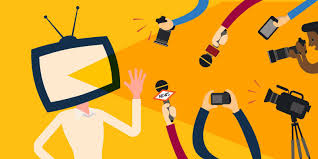When major news happens, the world’s mass media organizations take notice. Whether it’s
the President of the United States making an announcement or a severe storm battering a
region, when it’s a story that affects people, the news media is on alert to cover it, providing
viewers with the facts and information they need to understand what is happening.
But sometimes it may seem, with so much media focus and scrutiny on a single event, that
the mass media is missing or even ignoring other important stories. This is the crux of the
agenda-setting theory.
This theory refers to how the media’s news coverage determines which issues become the
focuses of public attention.
First introduced in 1972 by college professors, Maxwell McCombs and Donald Shaw, they
found in surveying North Carolina voters during the 1968 U.S. presidential election that
what people thought were the most important issues were what the mass media reported as
the most critical.
Thus, agenda-setting theory was born, built on the notion that the mass media sets the
agenda for what people should care about.
The influence of media affects the presentation of the reports and issues made in the news
that affects the public mind. The news reports make it in a way that when a particular news
report is given importance and attention than other news the audience will automatically
perceive it as the most important news and information are given to them. The priorities of
which news comes first and then the next are set by the media according to how people
think and how much influence will it have among the audience.
Agenda setting occurs through a cognitive process known as “accessibility”. Media
provides information which is the most relevant food for thought, portraits the major issues
of the society and reflects people minds.
Assumptions:
The agenda-setting theory rests on two basic assumptions.
The first is that the media filters and shapes what we see rather than just reflecting stories to
the audience. An example of this is seeing a sensational or scandalous story at the top of a
broadcast as opposed to a story that happened more recently or one that affects more people,
such as an approaching storm or legislative tax reform.
The second assumption is that the more attention the media gives to an issue, the more
likely the public will consider that issue to be important. Another way to look at it: Massmedia organizations aren’t telling us what to think or how we should feel about a story or
issue, but are giving us certain stories or issues that people should think more about.
There is psychological and scientific merit to the agenda-setting theory. The more a story is
publicized in the mass media, the more it becomes prominently stored in individuals’
memories when they’re asked to recall it, even if it doesn’t specifically affect them or
register as a prominent issue in their minds.
Types of Agenda Setting
There are three types of agenda setting:
- Public Agenda Setting: when the public determines the agenda for which stories are
considered important. - Media Agenda Setting: when the media determines the agenda for which stories are
considered important. - Policy Agenda Setting: when both the public and media agendas influence the
decisions of public policy makers.
Criticisms - One of the issues with the agenda-setting theory is that it is difficult to measure.
- Research on the theory has been largely inconclusive in establishing a causal
relationship between public prominence and media coverage. And in 2018, with the
worldwide influence of the internet and social media, where almost everyone can find
news they’re looking for instead of being constrained by just relying on one or two
sources, it’s harder to convince others that the mass media is setting the agenda. - In addition, the theory doesn’t work for people who have already made up their
minds. For example, someone might believe that his or her elected official was the
right choice for office, despite numerous compelling reports to the contrary
presented by the mass media.






















 WhatsApp us
WhatsApp us